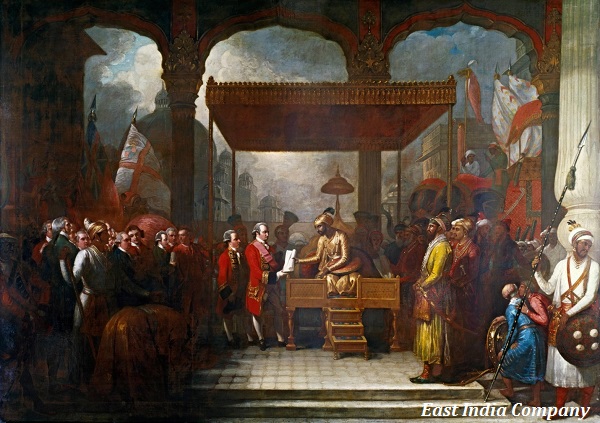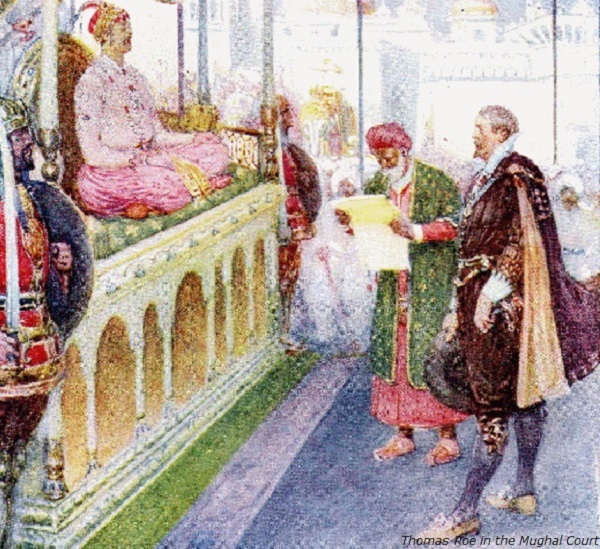
- Modern Indian History Tutorial
- Modern Indian History - Home
- Decline of Mughal Empire
- Bahadur Shah I
- Jahandar Shah
- Farrukh Siyar
- Muhammad Shah
- Nadir Shah’s Outbreak
- Ahmed Shah Abdali
- Causes of Decline of Mughal Empire
- South Indian States in 18th Century
- North Indian States in 18th Century
- Maratha Power
- Economic Conditions in 18th Century
- Social Conditions in 18th Century
- Status of Women
- Arts and Paintings
- Social Life
- The Beginnings of European Trade
- The Portuguese
- The Dutch
- The English
- East India Company (1600-1744)
- Internal Organization of Company
- Anglo-French Struggle in South India
- The British Conquest of India
- Mysore Conquest
- Lord Wellesley (1798-1805)
- Lord Hastings
- Consolidation of British Power
- Lord Dalhousie (1848-1856)
- British Administrative Policy
- British Economic Policies
- Transport and Communication
- Land Revenue Policy
- Administrative Structure
- Judicial Organization
- Social and cultural Policy
- Social and Cultural Awakening
- The Revolt of 1857
- Major Causes of 1857 Revolt
- Diffusion of 1857 Revolt
- Centers of 1857 Revolt
- Outcome of 1857 Revolt
- Criticism of 1857 Revolt
- Administrative Changes After 1858
- Provincial Administration
- Local Bodies
- Change in Army
- Public Service
- Relations with Princely States
- Administrative Policies
- Extreme Backward Social Services
- India & Her Neighbors
- Relation with Nepal
- Relation with Burma
- Relation with Afghanistan
- Relation with Tibet
- Relation with Sikkim
- Relation with Bhutan
- Economic Impact of British Rule
- Nationalist Movement (1858-1905)
- Predecessors of INC
- Indian National Congress
- INC & Reforms
- Religious & Social Reforms
- Religious Reformers
- Women’s Emancipation
- Struggle Against Caste
- Nationalist Movement (1905-1918)
- Partition of Bengal
- Indian National Congress (1905-1914)
- Muslim & Growth Communalism
- Home Rule Leagues
- Struggle for Swaraj
- Gandhi Assumes Leadership
- Jallianwalla Bagh Massacre
- Khilafat & Non-Cooperation
- Second Non-Cooperation Movement
- Civil Disobedience Movement II
- Government of India Act (1935)
- Growth of Socialist Ideas
- National Movement World War II
- Post-War Struggle
- Clement Attlee’s Declaration
- Reference & Disclaimer
Modern Indian History - The English
An English association or company to trade with the East was formed in 1599 under the auspices of a group of merchants known as the Merchant Adventurers. The company was granted a Royal Charter and the exclusive privilege to trade in the East by Queen Elizabeth on 31 December 1600. The company was named as the East India Company.

From the beginning, it was linked with the monarchy: Queen Elizabeth (1558-1603) was one of the shareholders of the company.
The first voyage of the English East India Company was made in 1601 when its ships sailed to the Spice Islands of Indonesia.
In 1608, a factory was established at Surat, on the West coast of India and sent Captain Hawkins to Jahangir’s Court to obtain Royal favors.
Initially, Hawkins was received in a friendly manner. He was given a mansab and a jagir. Later, he was expelled from Agra as a result of Portuguese intrigue. This convinced the English (need) to overcome Portuguese influence at the Mughal Court if they were to obtain any concessions from the Imperial Government.
English defeated a Portuguese naval squadron at Swally near Surat in 1612 and then again in 1614. These victories led the Mughals to hope that in view of their naval weakness, they could use the English to counter the Portuguese on the sea.

In 1615, English ambassador Sir Thomas Roe reached the Mughal Court (shown in the image given above) and exerted pressure on the Mughal authorities by taking advantage of India's naval weakness. English merchants also harassed the Indian traders while shipping through the Red Sea and to Mecca. Thus, combining entreaties with threats, Roe succeeded in getting an imperial Farman to trade and establish factories in all parts of the Mughal Empire.
Roe's success further angered the Portuguese and a fierce naval battle between the two countries began in 1620 that ended with English victory.
Hostilities between the English and Portuguese came to an end in 1630.
In 1662, the Portuguese gave the Island of Bombay to King Charles II of England as dowry for marrying with a Portuguese Princess.
Eventually, the Portuguese lost all their possessions in India except Goa, Diu, and Daman.
The English Company fell out with the Dutch Company over division of the spice trade of the Indonesian Islands. Finally, the Dutch nearly expelled the English from the trade of the Spice Islands and the later were compelled to concentrate on India where the situation was more favorable to them.
The intermittent war in India between the English and the Dutch had begun in 1654 and ended in 1667; when the English gave up all claims to Indonesia while the Dutch agreed to leave alone the English settlements in India.
The English, however, continued their efforts to drive out the Dutch from the Indian trade and by 1795, they had expelled the Dutch from their last possession in India.
The English East India Company had very humble beginnings in India. Surat was the center of its trade till 1687.
Throughout the trading period, the English refrained petitioners before the Mughal authorities. By 1623, they had established factories at Surat, Broach, Ahmedabad, Agra, and Masulipatam.